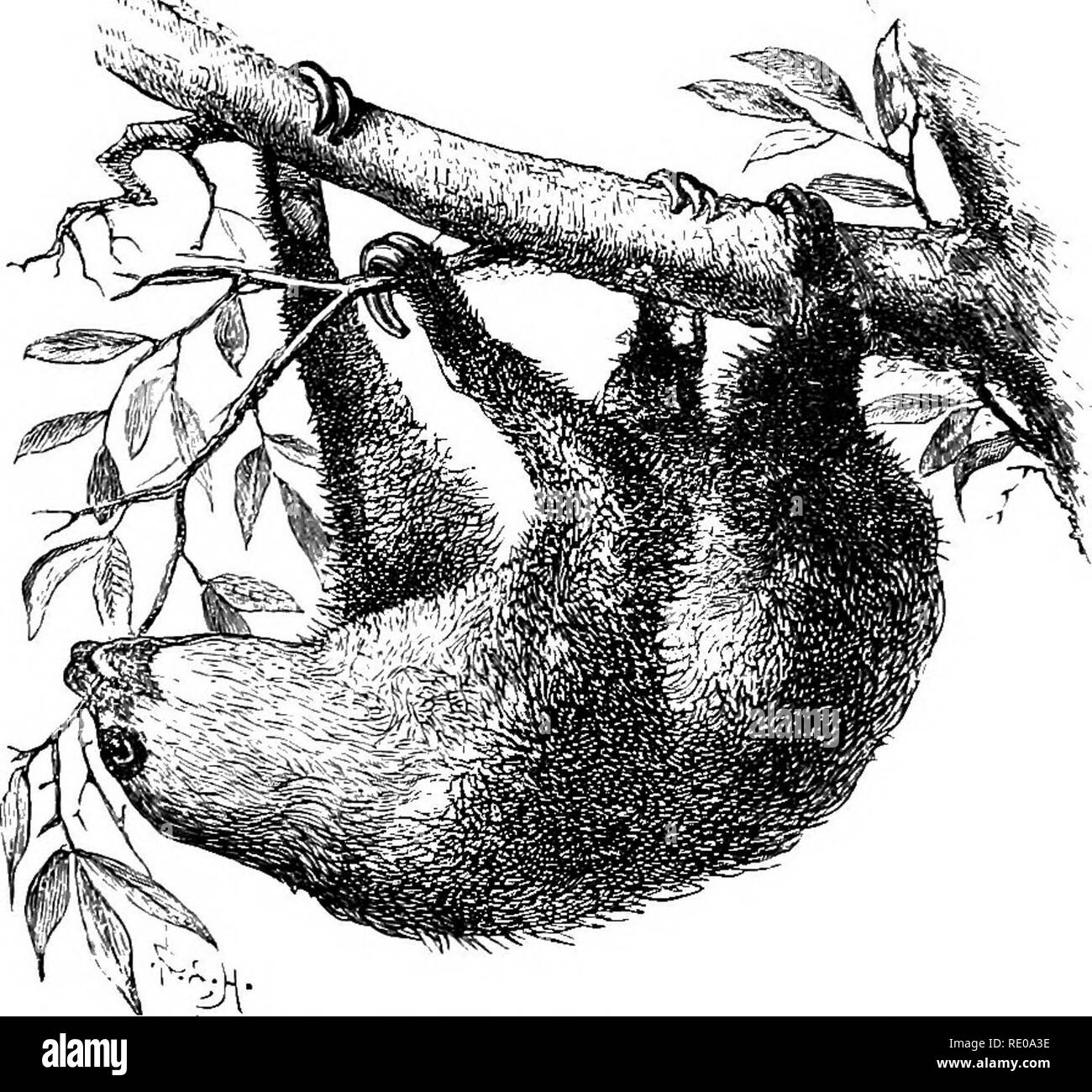. An introduction to the study of mammals living and extinct. Mammals. i8o EDENTATA arboreal in habits, vegetable feeders, and limited geographically to the forest regions of South and Central America. The Sloths, as the animals of this family are called on account of the habitual sluggishness of their movements, are the most strictly arboreal of all mammals, living entirely among the branches of trees, usually hanging luider them, with their backs downwards (Fig. 58), and clinging to them with the simple hook-like organs to which the terminations of all their Hmbs are reduced. "When they

Image details
Contributor:
The Book Worm / Alamy Stock PhotoImage ID:
RE0A3EFile size:
7.1 MB (560.6 KB Compressed download)Releases:
Model - no | Property - noDo I need a release?Dimensions:
1638 x 1525 px | 27.7 x 25.8 cm | 10.9 x 10.2 inches | 150dpiMore information:
This image is a public domain image, which means either that copyright has expired in the image or the copyright holder has waived their copyright. Alamy charges you a fee for access to the high resolution copy of the image.
This image could have imperfections as it’s either historical or reportage.
. An introduction to the study of mammals living and extinct. Mammals. i8o EDENTATA arboreal in habits, vegetable feeders, and limited geographically to the forest regions of South and Central America. The Sloths, as the animals of this family are called on account of the habitual sluggishness of their movements, are the most strictly arboreal of all mammals, living entirely among the branches of trees, usually hanging luider them, with their backs downwards (Fig. 58), and clinging to them with the simple hook-like organs to which the terminations of all their Hmbs are reduced. "When they are obliged from any cause to descend to the ground, which they rarely, if ever, do voluntarily, their limbs, owing to their unequal length and the peculiar conformation of the feet—which allows the animals to rest only on the outer edge—are most inefficient "''A«j.-. Fig. 68.—Two-toed Slotli (Cholcepus koffmanni). for terrestrial progression, and they crawl along a level surface with considerable difficulty. Though generally slow and inactive, even when in their natural haunts. Sloths can on occasions travel with, considerable rapidity along the branches; and, as they do not leap, like most other arboreal creatures, they avail themselves of the swaying of the boughs by the -vvind to pass from tree to tree. They feed entirely on leaves and young shoots and fruits, which they gather in their mouth, the fore limbs aiding in di-ao-o-ino- boughs within reach, but not being used like hands, as they are by monkeys, squirrels, etc. When sleeping they roll themselves up in a ball, and, owing to the dry shaggy character of their hair, are very inconspicuous among the mosses and lichens vrith which the. Please note that these images are extracted from scanned page images that may have been digitally enhanced for readability - coloration and appearance of these illustrations may not perfectly resemble the original work.. Flower, William Henry, 1831-1899; Lydekker, Richard, 18